| Srl | Item |
| 1 |
ID:
193449
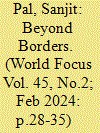

|
|
|
|
|
| Summary/Abstract |
This ar ticle explores the dynamic and complex landscape of strategic interactions in the vast Indo-Pacific region. In recent years, the Indo-Pacific has become the centre of global strategic competition. Begins with theconceptual framework and dynamics of Indo-Pacific, the article explores the current strategic priorities of major players like China, the United States, India, and regional alliances like ASEAN. Special attention is given to the maritime domain, where territorial disputes, resource competition, and naval presence contribute to the evolving strategic landscape.
|
|
|
|
|
|
|
|
|
|
|
|
|
|
|
|
| 2 |
ID:
186511


|
|
|
|
|
| Summary/Abstract |
Bhutan’s initial historical connections with China were made through Tibet. Bhutan and Tibet have a lengthy history of fighting and exchanges in religion and culture. The possibility of an ambiguous Chinese assertion of sovereignty over Bhutan significantly influenced how the two nations’ relations developed. China’s occupation of Tibet in the 1950s led Bhutan closer involvement with India, which
angered the Chinese government. China always wanted Bhutan to leave Indo-centrism in its foreign policy and conduct it independently. India’s defeat in the 1962 war with China and the incorporation of Sikkim within India’s boundary undoubtedly encouraged Bhutan to develop a mild approach towards China. China has been applying pressure on Bhutan while simultaneously collaborating economically on many projects in Bhutan to counterbalance India’s close ties to that country.
|
|
|
|
|
|
|
|
|
|
|
|
|
|
|
|
| 3 |
ID:
189605
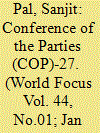

|
|
|
|
|
| Summary/Abstract |
Climate change has gained global attention, and various efforts have been made to address the issue. The Conference of Parties (COP) is one example of a United Nations initiative of this type; it held its twenty-seventh meeting in Sharm el-Sheikh, Egypt, in 2022. This meeting reiterated the objective of the Paris Agreement to keep the average global temperature rise well below 2 degrees Celsius above pre-industrial levels, along with the need to continue working to restrict it to 1.5 degrees Celsius. India reaffirmed its dedication to achieving net-zero emissions by the year 2070 at this summit, as Indian Prime Minister Narendra Modi had done in Glasgow last year. India has committed to phase out all fossil fuels instead of only coal. India must, however, rely on coal power to accelerate its development. The shift to a non-coal economy in coal regions should be gradual and require significant investments. Developing nations won’t be able to fulfil their Sharm el-Sheikh Conference pledges without substantial financial and technical support, information sharing, and capacity building from wealthy nations.
|
|
|
|
|
|
|
|
|
|
|
|
|
|
|
|
| 4 |
ID:
193329
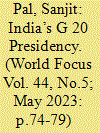

|
|
|
|
|
| Summary/Abstract |
This article examines the prospects and challenges of India’s G20 presidency, with a particular focus on the key issues and priorities that will shape India’s approach to global economic governance. India’s G20 presidency comes at a crucial time as the world is still struggling to deal with the COVID-19 pandemic, climate change, and other global challenges. One of the key prospects of India’s presidency is the opportunity to showcase its leadership in areas such as renewable energy, digital technology, healthcare, etc. India has made significant progress in these areas, and the G20 presidency can provide a forum to share its experiences and best practises with other countries. The article begins by providing an overview of the G20 and its role in global economic governance.
|
|
|
|
|
|
|
|
|
|
|
|
|
|
|
|
| 5 |
ID:
193398
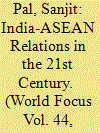

|
|
|
| 6 |
ID:
193355


|
|
|
|
|
| Summary/Abstract |
India and Uzbekistan have shared historical and cultural ties dating back centuries. In recent years, these two nations have embarked on a journey of strengthening bilateral relations, forging a path of contemporary cooperation. This article delves into the multifaceted aspects of the India-Uzbekistan relationship, examining the key areas of collaboration, challenges faced, and the potential for future growth. The article begins by highlighting the historical context that laid the foundation for the present-day cooperation between India and Uzbekistan.
|
|
|
|
|
|
|
|
|
|
|
|
|
|
|
|
| 7 |
ID:
185128


|
|
|
|
|
| Summary/Abstract |
India’s special relationship with the Soviet Union and the logic of Cold War politics led India to take a neutral stance on Soviet intervention, which harmed India’s image among Afghans and the West. The Taliban era (1996–2001) was the lowest point in India-Afghanistan relations. The rise of the Karzai regime provided an opportunity for India to re-establish ties with Afghanistan.
|
|
|
|
|
|
|
|
|
|
|
|
|
|
|
|
| 8 |
ID:
187333
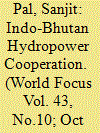

|
|
|
|
|
| Summary/Abstract |
Hydropower cooperation is a significant aspect of the bilateral relationship between India and Bhutan. Nature has provided Bhutan with an abundance of water resources. However, Bhutan cannot generate hydroelectric power on its own due to a lack of resources and technology. For both, Bhutan is reliant on India and as a result, a number of Indian hydroelectric companies are present in Bhutan. India is not only Bhutan’s primary development partner but also its most important trade partner. Energy is Bhutan’s main export items, and India is its primary customer. Hydropower generation continues to be the largest source of export earnings for Bhutan. Bhutan’s untapped hydropower resource has the potential to improve human resources, eradicate poverty, and accelerate economic growth.
|
|
|
|
|
|
|
|
|
|
|
|
|
|
|
|
| 9 |
ID:
187579
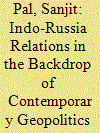

|
|
|
|
|
| Summary/Abstract |
India and Russia’s relations have generally been friendly. This relationship has developed to the level of a privileged strategic partnership since the beginning of the twenty-first centur y. From the beginning of Russia’s invasion of Ukraine, the Indian government has consistently supported Putin. India wants to maintain a positive relationship with Russia because it needs Moscow’s support in resolving territorial conflicts with its neighbors, especially China, and fulfilling its defence needs. But all this does not mean India will maintain its support for Russia no matter what it does.
|
|
|
|
|
|
|
|
|
|
|
|
|
|
|
|
| 10 |
ID:
179651
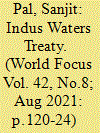

|
|
|
|
|
| Summary/Abstract |
The political partition of India in 1947 divided the Indus river system between India and Pakistan that resulted in disruption of water supply as well as production of hydropower in both the countries.
|
|
|
|
|
|
|
|
|
|
|
|
|
|
|
|
| 11 |
ID:
193371
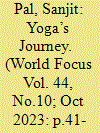

|
|
|
|
|
| Summary/Abstract |
Yoga, an ancient practice rooted in the heart of India’s spiritual and philosophical traditions, has embarked on a remarkable journey spanning millennia and continents. This article explores the fascinating journey of yoga from its beginnings in ancient India to becoming a global wellness phenomenon. It begins by looking at how yoga started during the time of the Indus Valley Civilization and how early texts like the Vedas and Upanishads laid the foundation for its spiritual and philosophical aspects. Over time, yoga evolved and became a well-kept secret of the East.
|
|
|
|
|
|
|
|
|
|
|
|
|
|
|
|